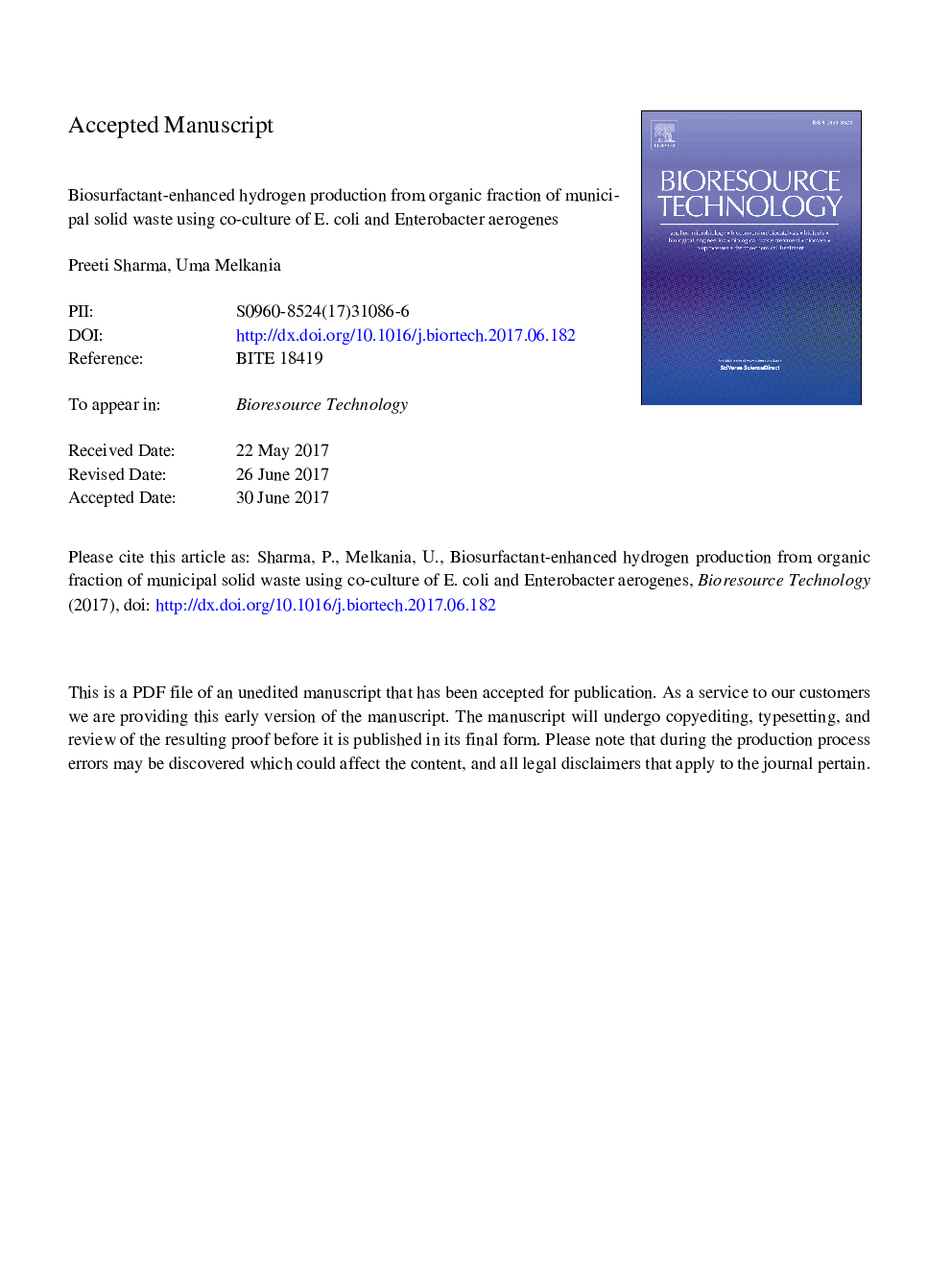| Article ID | Journal | Published Year | Pages | File Type |
|---|---|---|---|---|
| 4996913 | Bioresource Technology | 2017 | 29 Pages |
Abstract
The effect of biosurfactants (surfactin and saponin) on the hydrogen production from organic fraction of municipal solid waste (OFMSW) was investigated using co-culture of facultative anaerobes Enterobacter aerogenes and E. coli. The biosurfactants were applied in the concentration ranges of 0.5, 1.0, 1.5, 2.0, 2.5, 3.0, 3.5 and 5.0% each. Cumulative hydrogen production (P), maximum hydrogen production rate (Rmax) and lag phases (λ) were analyzed using modified Gompertz model. Results revealed that both the biosurfactants were effective in hydrogen production enhancement. The maximum cumulative hydrogen production of 743.5 ± 14.4 ml and 675.6 ± 12.1 ml and volumetric hydrogen production of 2.12 LH2/Lsubstrate and 1.93 LH2/Lsubstrate was recorded at 3.5% surfactin and 3.0% saponin respectively. Corresponding highest hydrogen yields were 79.2 ml H2/gCarboinitial and 72.0 ml H2/gCarboinitial respectively. Lag phase decreased from 12.5 ± 2.0 h at control to a minimum of 9.0 ± 2.8 h and 9.5 ± 2.1 h at 3.5% surfactin and 3.0% saponin respectively. Volatile fatty acid generation was increased with biosurfactants addition.
Keywords
Related Topics
Physical Sciences and Engineering
Chemical Engineering
Process Chemistry and Technology
Authors
Preeti Sharma, Uma Melkania,
